Digging Through The Archives: Decades Of Burton Innovation
Since day one, Burton innovation has helped push snowboarding forward.
On a recent afternoon in Burlington, Vermont, Burton Archivist Todd “TK” Kohlman rustled through some boxes on the second level of the product archives. A towering multi-level warehouse storage facility connected to Craig’s Prototype Facility, the Burton archives contain approximately 50,000 products and represent a near-comprehensive look at our history of having as much fun as possible.
It’s the perfect place to hunt for innovation (and nostalgia).
As TK shuffled boxes around a small cloud of dust drifted out and he joked about how full the space was getting. “Don’t look down that aisle,” he said with a chuckle, referring to the last row on that level (which was currently impassable).

And it’s true. Burton has made a lot of great stuff since 1977, and when you stack it all up together and see it in one place, it’s overwhelming. Fortunately, TK’s knowledge of the archives came in handy, and he was able to dig out the exact products on our (non-exhaustive) list of important Burton innovations from throughout the years. While some of these innovations didn’t last forever, each one was an important building block in the foundation of modern snowboarding.
- 1983 Burton Performer Snowboard: first use of binding ankle strap
- 1993 Burton Brushie Snowboard: first use of 3D hole pattern
- 2003 Burton Mission GT Snowboard Binding: first use of high-back wings
- 2005 Burton Ion Snowboard Boot: first use of Speed Zone lacing
- 2007 Burton Jeremy Jones Snowboard (Late Release): first use of The Channel
1983 Burton Performer Snowboard

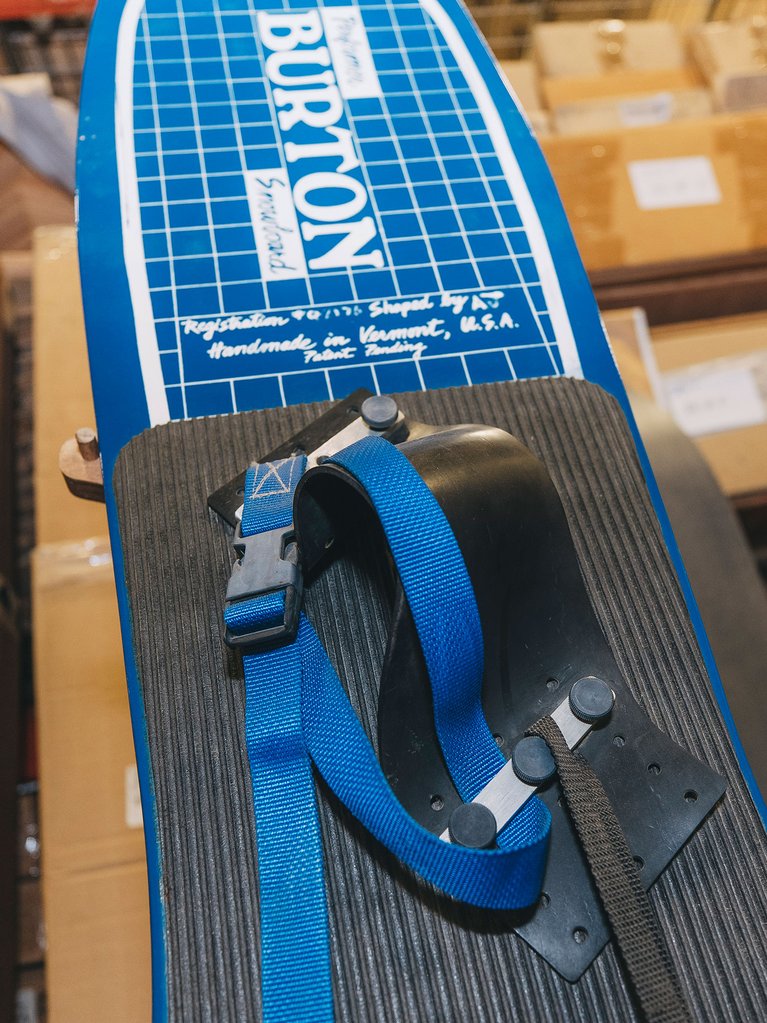
Innovation: The first production snowboard to have bindings with an ankle strap.
Listed as “experimental” and “ideally suited for tricks and jumps” in the 1983 catalog, The Performer snowboard featured universally adjustable front and rear bindings with ankle straps. The straps allowed riders to generate more control from edge to edge and enjoy higher speeds. Engineered for resort riders who spent most of their time on groomers, The Performer also featured triple fins for holding a carve on packed snow.
It's amazing to think that this is where the modern snowboard binding started, but innovation is a progression; a series of small developments and advances that build on successes and failures as an evolution.
1993 Burton Brushie Snowboard
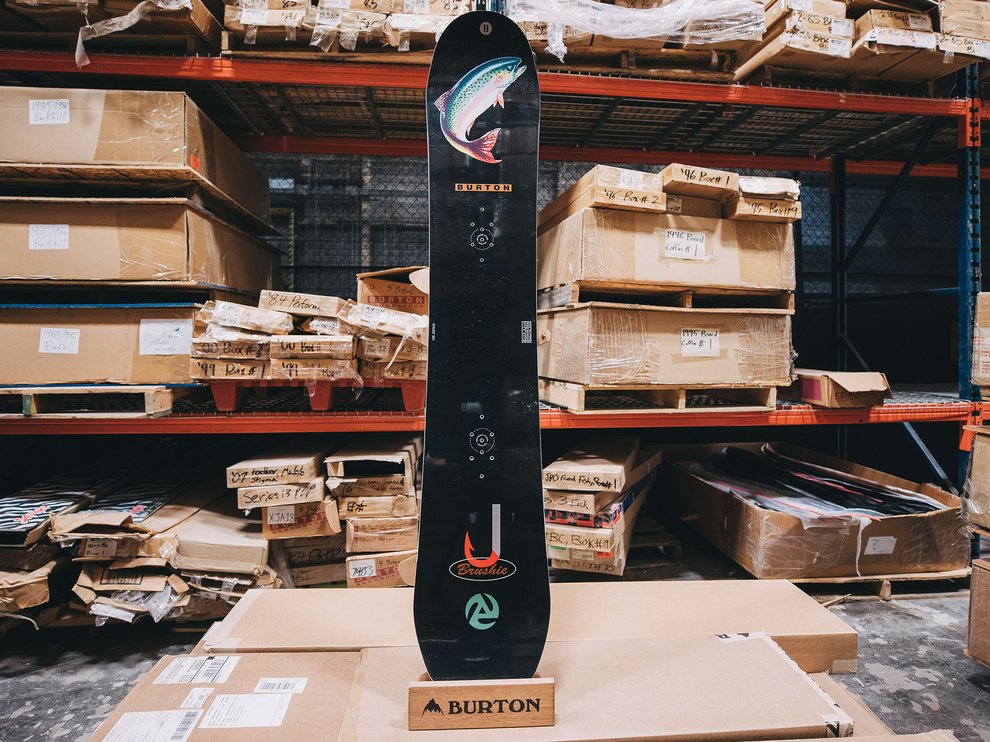
Innovation: The first production snowboard with the 3D hole pattern binding mounting system.
Dreamt of by Jeff, designed by Jeff, tested by Jeff, and fully approved by pro team rider, Jeff Brushie, the Burton Brushie snowboard was part of the original collection of boards released in 1993 that featured an all-new 3D hole pattern binding mounting system (that the entire line would adopt in subsequent years).
Prior to the 3D interface, Burton used inserts that provided only one or two stance width placements and limited options for angles. But as snowboarding expanded, so did the demand for more variety and convenience with binding mounting. Listening to rider feedback, Burton created a binding disc and board insert pattern that accommodated a respectable 2,073,600 different stance options (yes, we actually did the math).
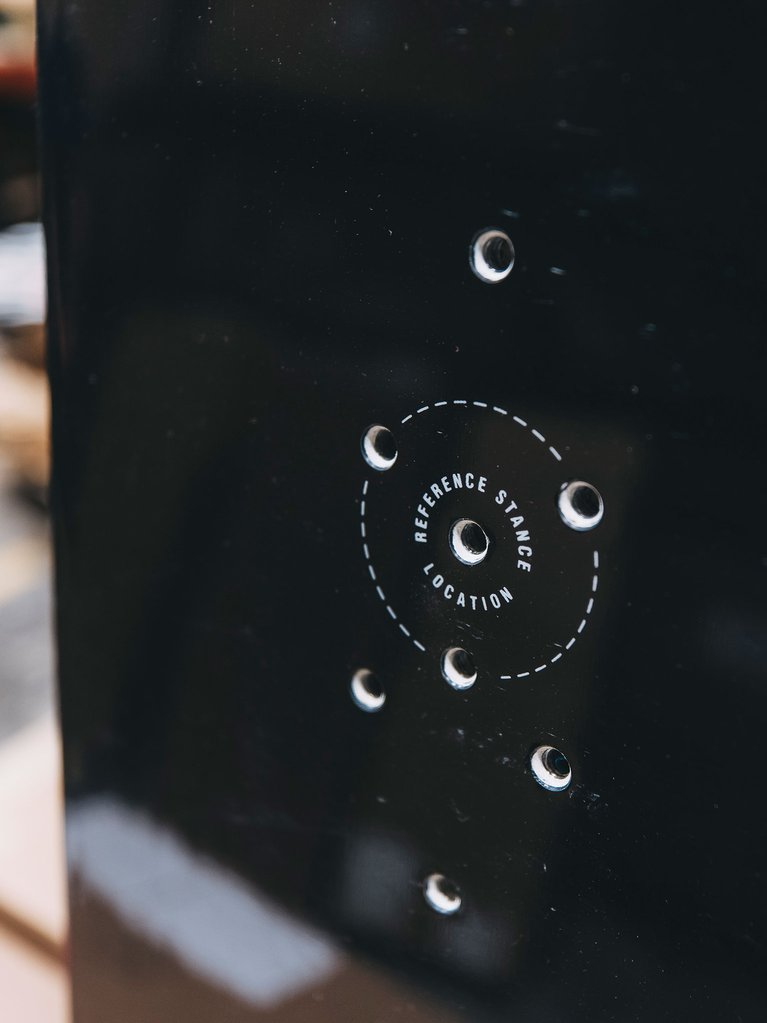
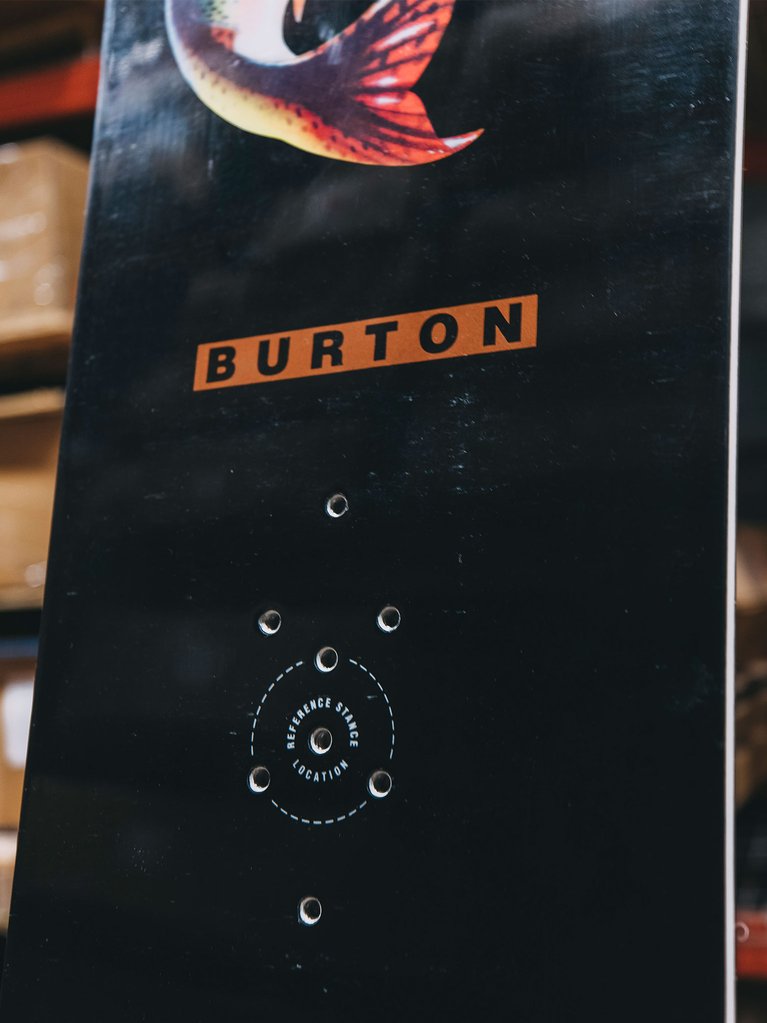
The 3D hole pattern was designed to increase stance mounting options and reduce the bolt pattern footprint—a perfect example of minimalism with as little sacrifice as possible.
2003 Burton Mission GT Snowboard Binding

Innovation: The first use of a wing high-back on a snowboard binding.
Energy drinks might give you wings now, but Burton gave you wings in 2003 with the Burton Mission GT snowboard binding. The Mission GT featured the MGT™ high-back with a removable, reposition-able wing that was designed to transfer more energy from the leg through to the snowboard for “more power on the wall” and more control on backseat landings.
The wings on the MGTs were symmetrical and interchangeable side-to-side, so you could take them off and flip them around to the other side of the binding. Hard-charging carvers would put the wing on the lateral side of their front binding and the medial side of their rear binding (so both wings were on the "nose-ward" side of their bindings), so they could really lean aggressively over their nose into each turn. Freestyle riders who rode more duck stances would put them on the lateral side of both bindings (as shown in the picture) for more support when landing tricks switch or regular.
The wing enjoyed a cult following and was released again on the 2010 Burton Infidel binding.
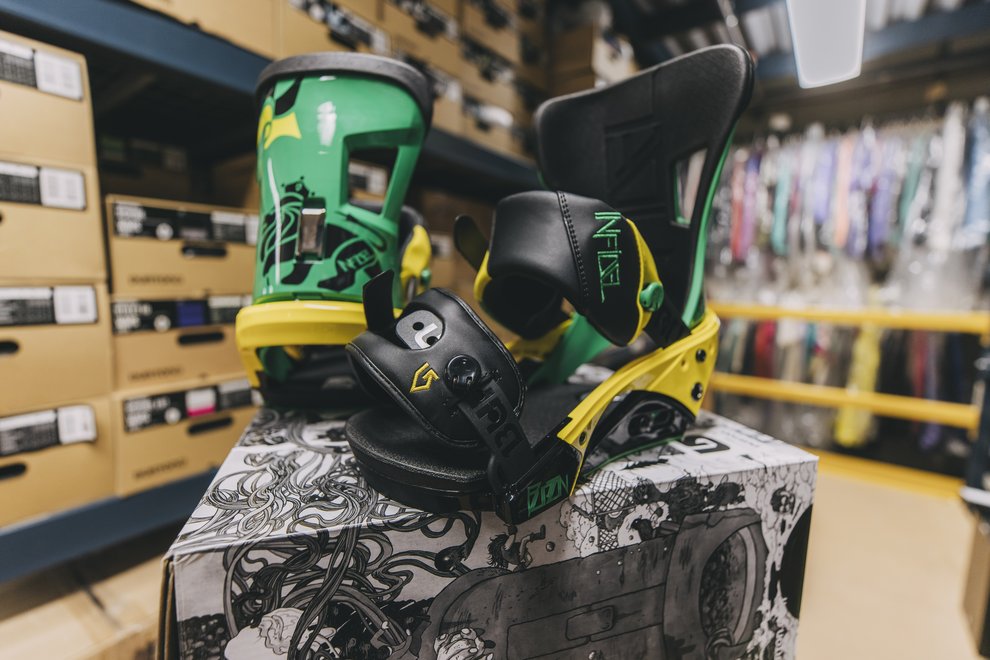
The original wing high-back became such a hot commodity on eBay that some of our team riders were purchasing and stockpiling them, so we decided to bring them back—a decision that was made at one of Jake’s Rider Roundtables.
2005 Burton Ion Snowboard Boot
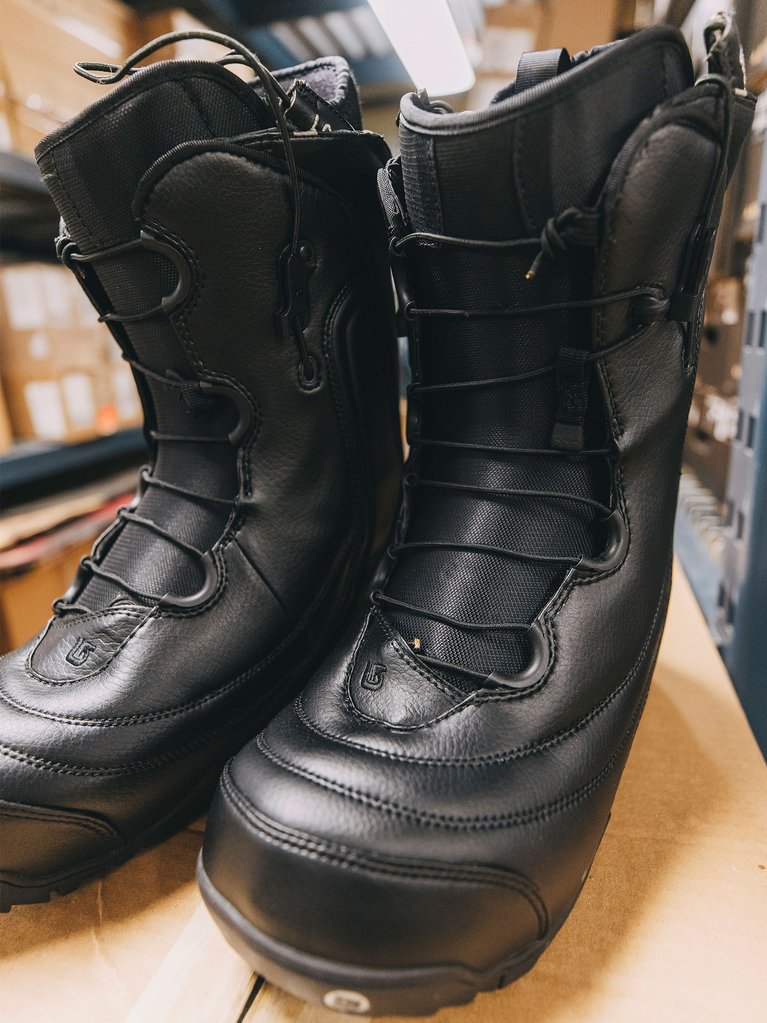
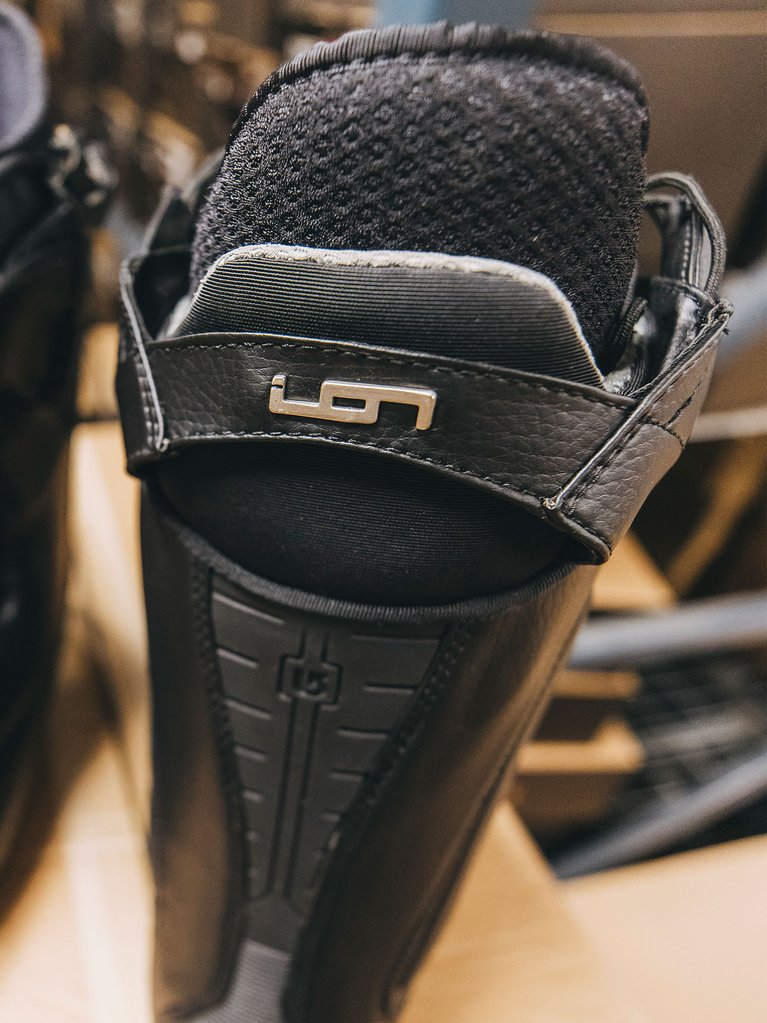
Innovation: The first production snowboard boot with Speed Zone® lacing.
The 2005 Burton snowboard boot line was the first to feature Speed Zone® lacing, with the Burton Ion. Still available today, Speed Zone snowboard boots feature two quick-pull laces that let riders independently tighten the upper and lower halves of the boot for a custom fit. The laces are routed within the boot shell and a simple pull on the handle is all that’s needed.
If you hated tying traditional lace snowboard boots in the parking lot, with bare hands, in below-freezing temperatures, this boot was a game-changer.
This boot set the stage for a decade of development around more convenient ways to “lace up” a snowboard boot. What seemed like a big departure from loop, swoop and pull, has become a long-standing, trusted, and sometimes preferred lacing system for our customers and top athletes alike.
2007 Burton Jeremy Jones Snowboard (Late Release)
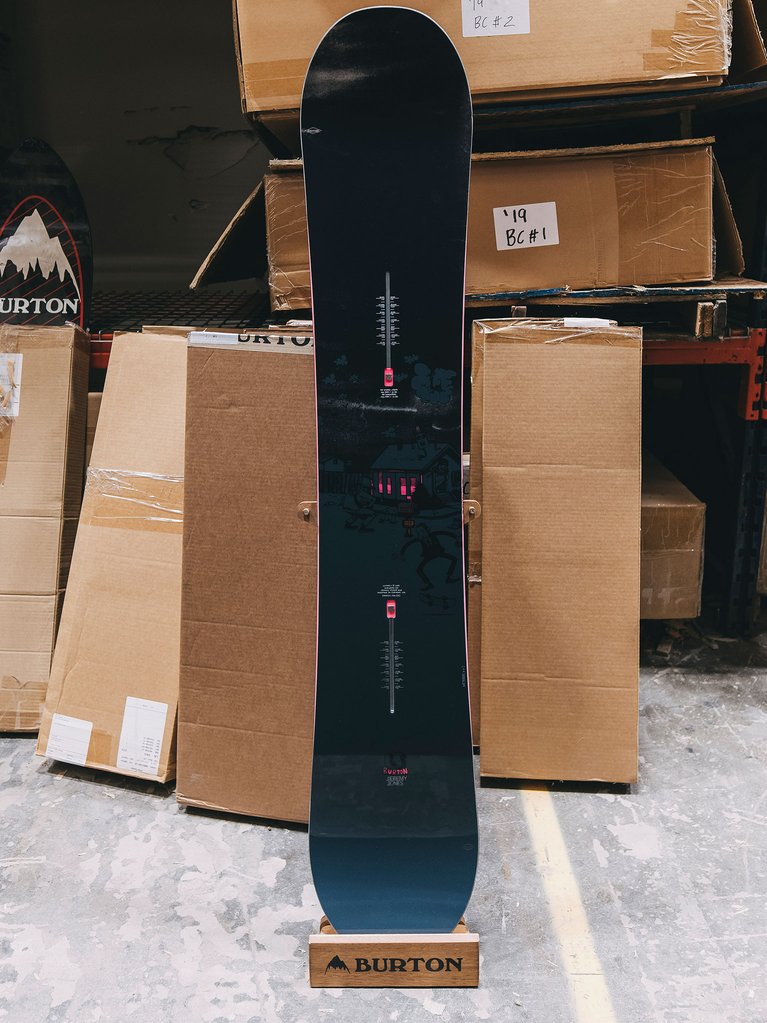
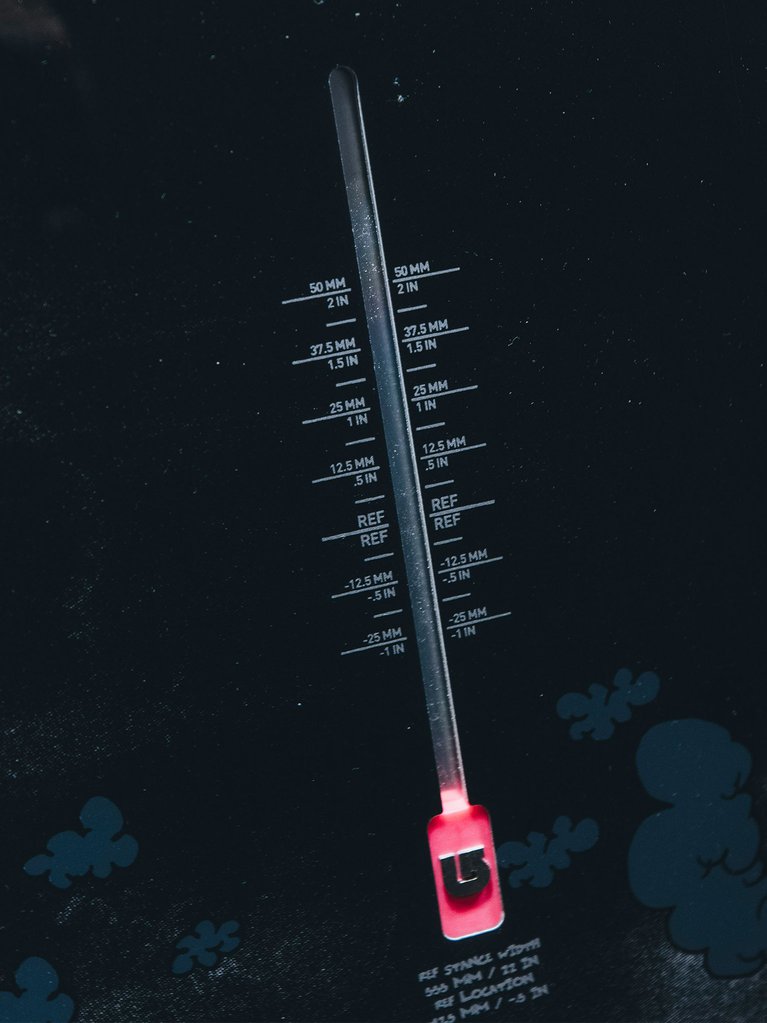
Innovation: The first snowboard with The Channel® (modified) binding mounting system.
The Late Release Jeremy Jones snowboard in 2007 was the first to feature The Channel® binding mounting system, a single slot down the center of the board for each foot. When combined with EST snowboard bindings, Channel/EST system riders could experience the closest, most comfortable, and easily adjustable connection to ever see snow.
The Channel innovation was so successful that the 3D hole pattern mounting system was phased out entirely in later years.
This was the very first Channel snowboard, but it doesn't actually work very well with EST bindings. EST bindings didn't come out until a year later and this board was only for use with a Channel "retro-disc" that worked with traditional disc bindings.
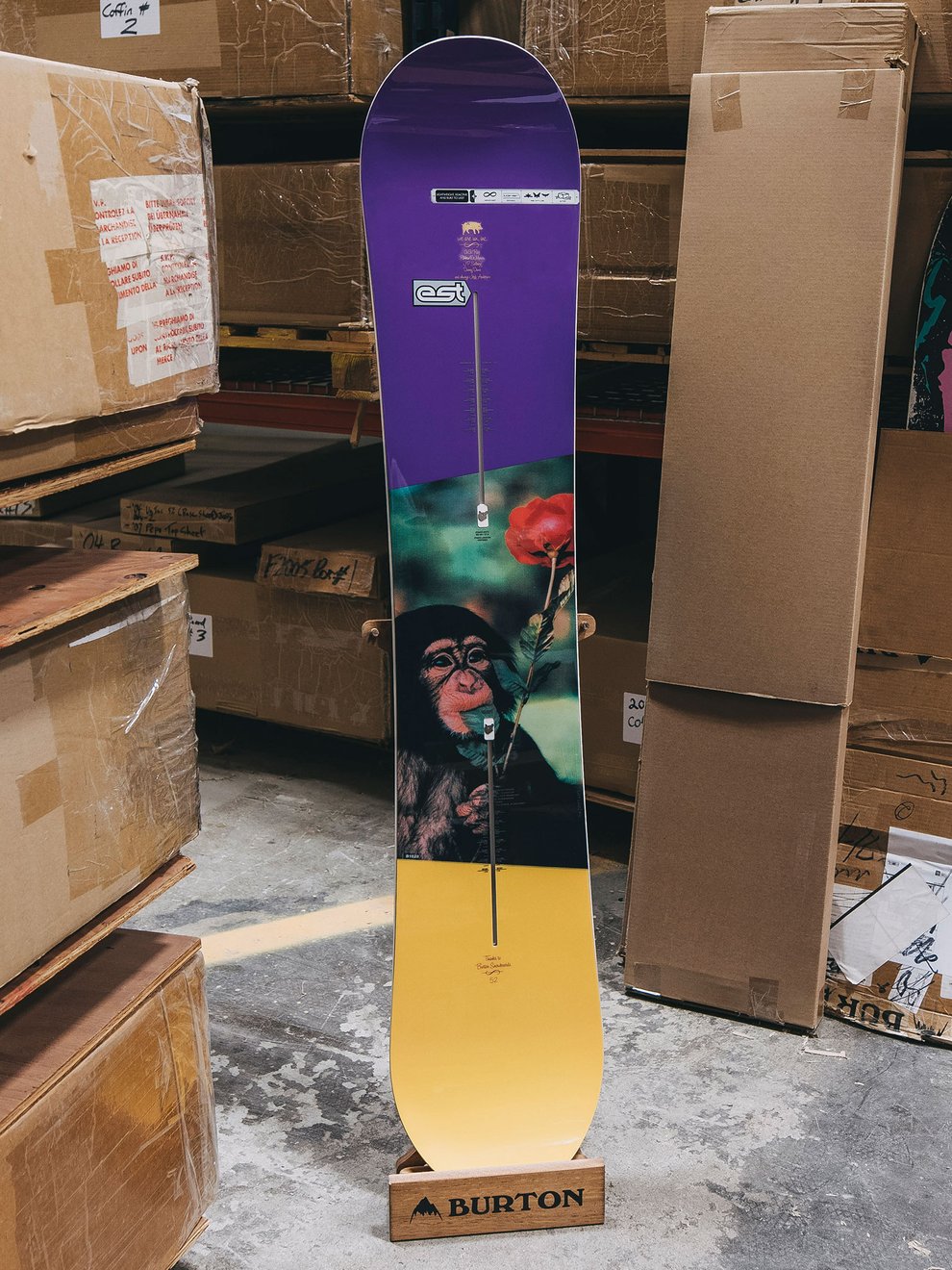
Innovation: The first snowboard with The Channel® binding mounting system.
The Late Release Jeremy Jones was actually a "sneak peek” product, and the first full product line to feature The Channel system was the 2008 Uninc snowboards.
15 years after minimizing the 4x4 hole pattern to 3D; Burton did it again. We ditched another bolt and removed all the inserts in the board. The result is infinite stance adjustment options, minimal effect on flex, and the least amount of hardware.
Bonus: Burton Innovation that didn't Work Out
When it comes to innovation, things don’t always work out. But the archives are a great reminder of why the process is important and why we need to keep trying new things and pushing to be better.


The Future of Burton Innovation
In the decades since the early prototypes first slid sideways on snow, Burton innovation has been a primary driver for many key milestones in the evolution and progression of snowboarding. From new materials to new manufacturing processes to new ways of thinking, our engineers worked closely with riders around the world to think outside the box, break stuff, and rebuild it better.
Fast forward to today. Burton innovation continues to push snowboarding. And we will continue to push snowboarding for the next 45 years, and beyond.